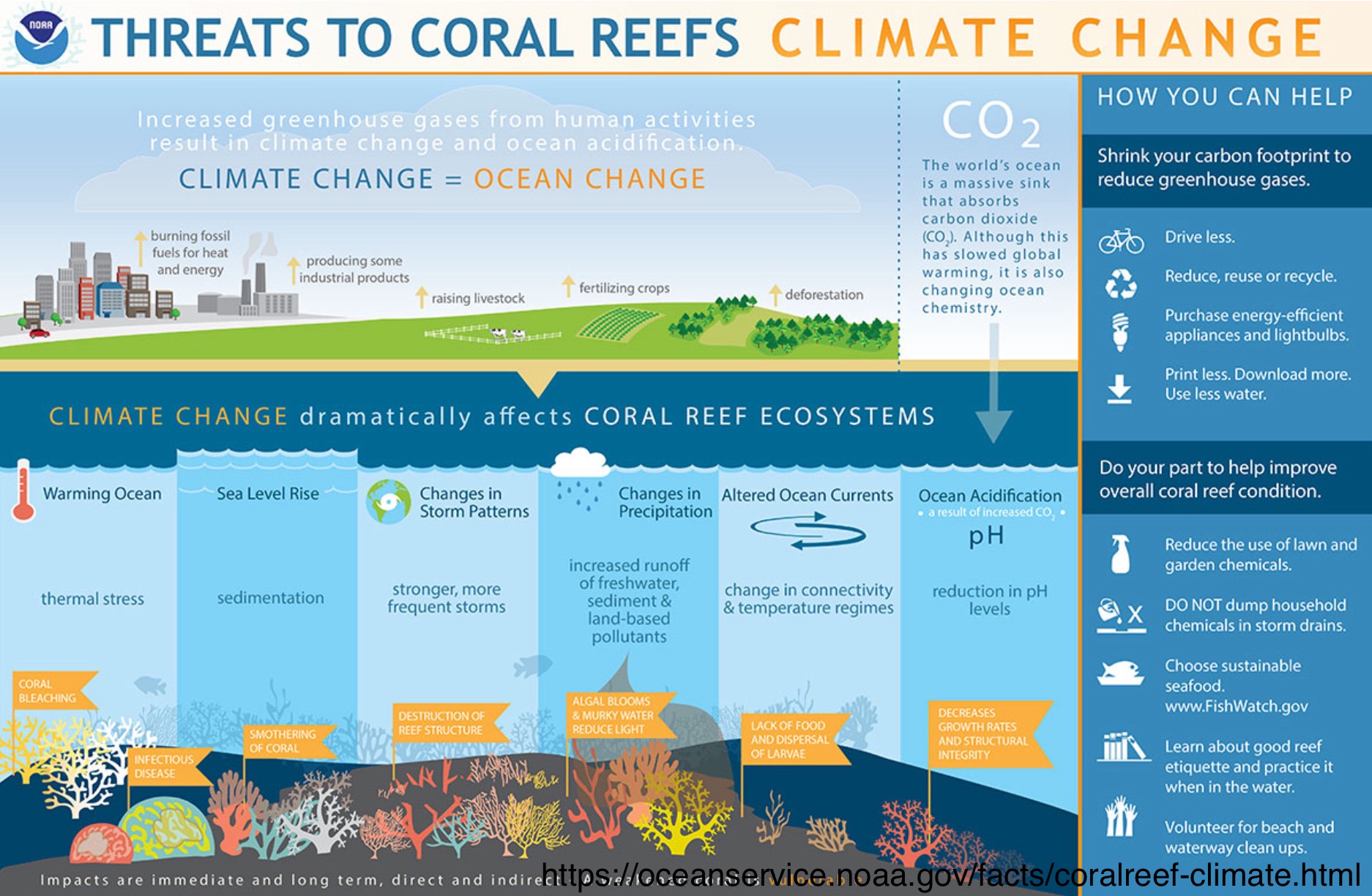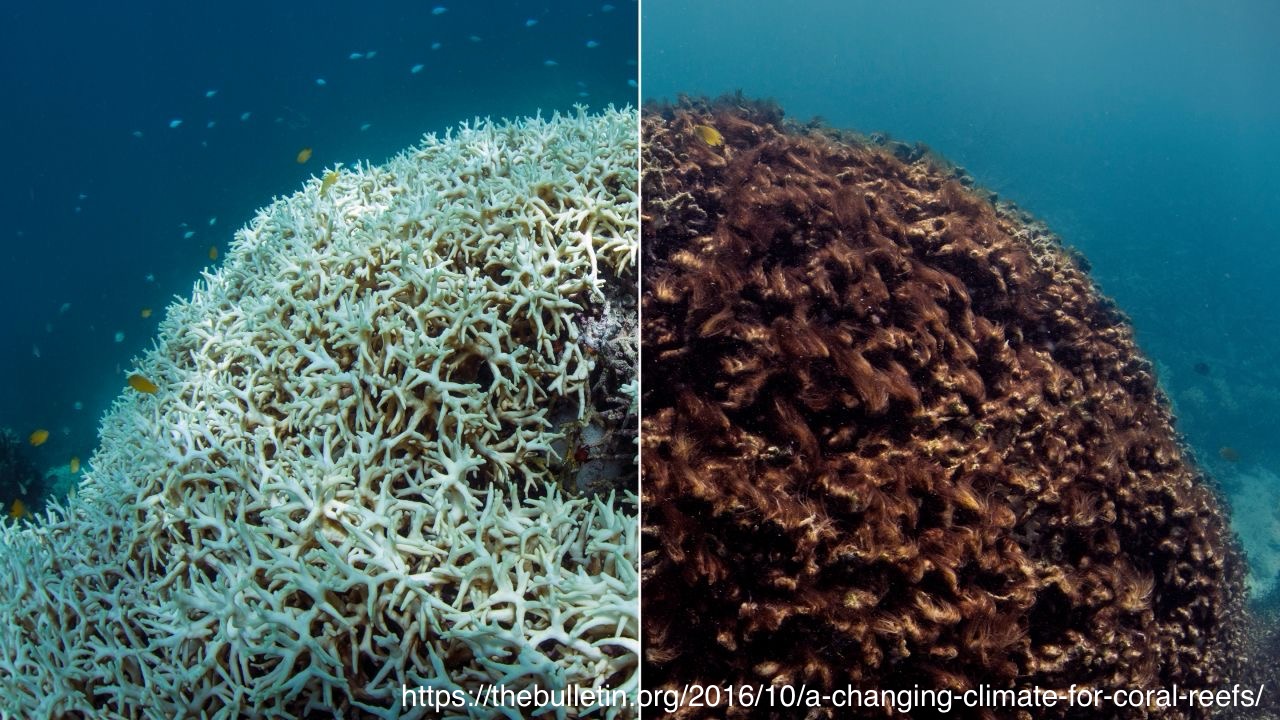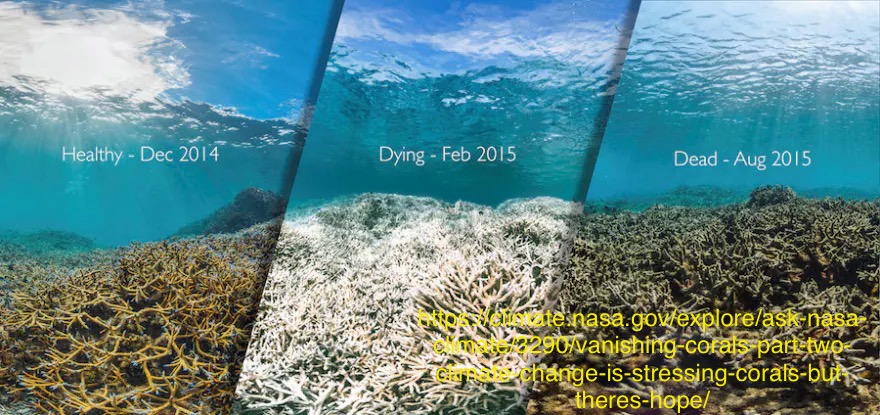Climate Change in Coral Reefs
As temperatures rise, mass coral bleaching events and infectious diseases outbreaks are becoming more frequent. Additionally, carbon dioxide absorbed into the ocean from the atmosphere has already begun to reduce calcification rates in reef-building and reef-associated organisms by altering seawater chemistry through decreases in pH. This process is called ocean acidification.
The ocean becomes more acidic as a result of absorbing carbon dioxide from the atmosphere. We call this process acidification of the ocean. The ocean's pH has dropped since the late 18th century as a result of absorbing roughly 30% of the carbon that people have produced.
Climate change is ocean change. When conditions such as the temperature change, corals expel the symbiotic algae living in their tissues, responsible for their color. The tiny algae that reside inside the tissues of corals are forced out by heat stress, exposing their white skeletons. While bleached corals are not dead, they are more vulnerable to illness and famine.
The primary reason of the rising temperatures on land and in our oceans is the increase in greenhouse gases, such as carbon dioxide. Since more than a century ago, the burning of fossil fuels has been the primary cause of the steady rise in carbon dioxide levels, which has led to climate change by trapping more heat in the atmosphere.


